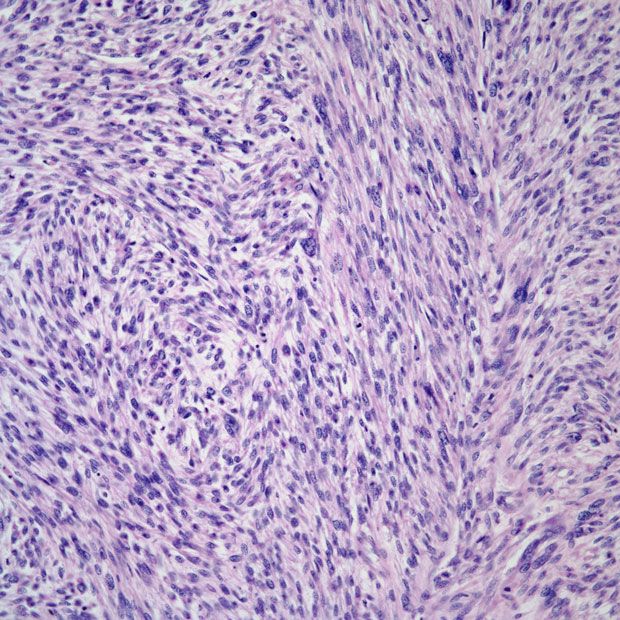Puerto Rican Population Has Higher Endometrial Cancer Incidence/Mortality
Findings from a secondary data analysis suggest a need for further research to determine risk factors that place younger patients who are Puerto Rican at a high risk of endometrial cancer.
"This study reveals a substantial health disparity among young [patients who were] Puerto Rican with greater endometrial cancer incidence rates and an increased rate of dying from [endometrial cancer] compared [with] Hispanic, [non-Hispanic White], and [non-Hispanic Black patients],” according to the study authors.

Patients in Puerto Rico were reported to have higher endometrial cancer incidence and mortality rates compared with non-Hispanic Black, Hispanic, and non-Hispanic White patients younger than 50 from 2000 to 2018, according to findings from a secondary data analysis published in Gynecologic Oncology Reports.
Overall, 41.3 per 100,000 patients who were Puerto Rican had an endometrial cancer diagnosis, which was the highest of all ethnic and racial groups in the study. Additionally, patients who were Puerto Rican experienced the lowest incidence of distant-stage disease (2.1 per 100,000) compared with patients who were non-Hispanic White (3.1), Hispanic (3.6), and non-Hispanic Black (6.7). However, the rates of localized disease in each respective group were 27.5, 27.3, 22.8, and 20.7 per 100,000 patients.
Patients who were Puerto Rican aged 20 to 34 years old experienced an annual percent change (APC) of 5.02% with respect to endometrial cancer diagnoses, which was the highest percent change across ethnic groups in that age range from 2000 to 2018 (P <.05). The highest APC change was reported in those who were Puerto Rican who were 35 to 49 years old at 6.96% (P <.05).
Investigators highlighted that the highest increase in endometrial cancer mortality rates occurred among patients who were non-Hispanic Black between the ages of 35 to 49 years old with an APC of 3.15% (P <.05) at a lower incidence rate of 1.9 per 100,000 patients. Those who were Puerto Rican in the same age group also experienced a significant increase in mortality with an APC of 2.08% (P <.05) and a mortality incidence of 3.2 per 100,000 patients.
“This study reveals a substantial health disparity among young [patients who were] Puerto Rican with greater endometrial cancer incidence rates and an increased rate of dying from [endometrial cancer] compared [with] Hispanic, [non-Hispanic White], and [non-Hispanic Black patients],” the study authors wrote. “This sheds light on the importance of further research to characterize the contributing risk factors that are making [the young Puerto Rican] population more vulnerable to endometrial cancer and to promote educational campaigns focused on the prevention of risk factors and early detection of this disease since there is deficient public awareness of obesity as a risk factor for endometrial cancer.”
Investigators of this study assessed endometrial cancer incidence and mortality from 2000 to 2018 for both the populations in Puerto Rico and the United States (US). Data were extracted from the Puerto Rico Central Cancer Registry; the National Cancer Institute’s Surveillance, Epidemiology, and End Results (SEER) program; and the Demographic Registry of Puerto Rico of the Puerto Rico Department of Health.
Investigators calculated incidence and mortality rates per 100,000 patients in those 20 years and older and adjusted ages to the 2000 US Standard Population for mutually exclusive racial and ethnic groups including Puerto Rican, non-Hispanic White, non-Hispanic Black, and Hispanic patients. Patients were stratified based on age and disease stage at diagnosis. Investigators also assessed 5-year relative survival rates (RSR) for patients diagnosed between 2010 and 2014, with follow-up to 2019.
The RSR among 2561 evaluable patients in Puerto Rico was 79.91% (95% CI, 78.09%-81.63%). With respect to different disease stages, the highest RSR was reported in 1636 patients with localized disease (90.01%; 95% CI, 88.09%-91.74%) followed by 567 of those with regional disease (69.67%; 95% CI, 65.33%-73.66%), 207 of those with unstaged disease (69.44%; 95% CI, 62.08%-75.88%), and 151 with distant disease (23.04%; 95% CI, 16.50%-30.29%).
Reference
Rosario-Santos A, Torres-Cintrón CR, López-Rexach AG, Gonzalez-Carcache P, Tortolero-Luna G, Umpierre S. A comparative analysis of endometrial cancer disparities in incidence, mortality, and survival between women living in Puerto Rico, Non-Hispanic Blacks, Non-Hispanic Whites, and US Hispanics between 2000-2018. Gynecol Oncol Rep. 2023;49:101275. doi:10.1016/j.gore.2023.101275